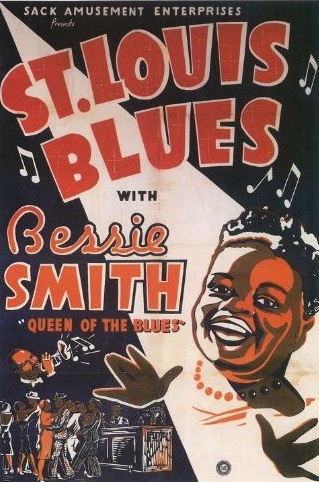 | St. Louis BluesW.C. Handy |
Writer(s): W.C. Handy (see lyrics here) Composed: 1914 First Charted: November 24, 1923 Peak: 9 PM (Click for codes to charts.) Sales (in millions): 1.0 (sheet music) Airplay/Streaming (in millions): -- radio, -- video, -- streaming |
 | St. Louis BluesMarion Harris |
First Charted: August 28, 1920 Peak: 13 PM, 16 GA (Click for codes to charts.) Sales (in millions): 1.0 (sheet music) Airplay/Streaming (in millions): -- radio, -- video, -- streaming |
|
| St. Louis BluesBessie Smith & Louis Armstrong |
First Charted: June 13, 1925 Peak: 3 PM (Click for codes to charts.) Sales (in millions): 1.0 (sheet music) Airplay/Streaming (in millions): -- radio, 1.57 video, 1.35 streaming |
About the Song:Not only is this the most recorded blues song of all time DJ and maybe the most recorded American song of all time, PM but is has been called “the most important blues song ever written.” LW William Christopher Handy, who became known as “The Father of the Blues,” was a bandleader who performed to mixed race audiences throughout the southern United States. As jug bands gained in popularity, he was driven to compose music in a similar style, LW most notably with “St. Louis Blues,” a lyric he claims he was inspired to write after hearing a St. Louis woman complaining about her cheating husband. LW He wrote the song in 1914, a time when the popular songs of Tin Pan Alley began fusing “with folklore to explore the blues, the form that led to the full-fledged birth of American jazz.” NPR Handy tapped into Afro-Spanish rhythms he picked up on trips to Cuba LW and mixed “the ‘humour of a coon’ song, the syncopation of ragtime, and the spirit of a Negro spiritual, and call[ed] it the blues.” RCG The great theatrical producer Florenz Ziegfeld credited Handy with putting black bands on the previously all-white map of Broadway in New York. RCG The song didn’t take off until Sophie Tucker incorporated it into her vaudeville act. TY2 It went on to chart fifteen times over the next forty years PM generating $25,000 a year, which by today’s standards would make Handy a billionaire. LW Prince’s Orchestra first hit with it in 1916 (#4), but Marion Harris had the greatest success with it in 1920 (#1). PM The best-selling version was by the Original Dixieland Jazz band in 1921. DJ In 1925, Bessie Smith’s version with Louis Armstrong on cornet hit #3 and it is the highest ranked version according to Dave’s Music Database. The Mills Brothers hit #2 in 1932. PM In 1935, Milton Brown & His Brownies recorded what music historian Steve Sullivan called “the best of all country versions of the W.C. Handy blues classic.” SS Among others to record it were Bing Crosby, Benny Goodman, Duke Ellington, Guy Lombardo, Lena Horne, Dinah Shore, Johnny Mercer, and Pearl Bailey. RCG The song has been featured in more than 25 Hollywood films, including the 1958 biopic St. Louis Blues, in which Nat “King” Cole plays Handy and sings his signature song. RCG The song was successful outside of America as well. It was said to be one of Queen Elizabeth II’s favorites. In the 1930s, Ethiopian soldiers used it as an anthem when fighting off Italian invaders. SS
Resources:
Related Links:First posted 11/24/2011; last updated 9/7/2023. |









No comments:
Post a Comment